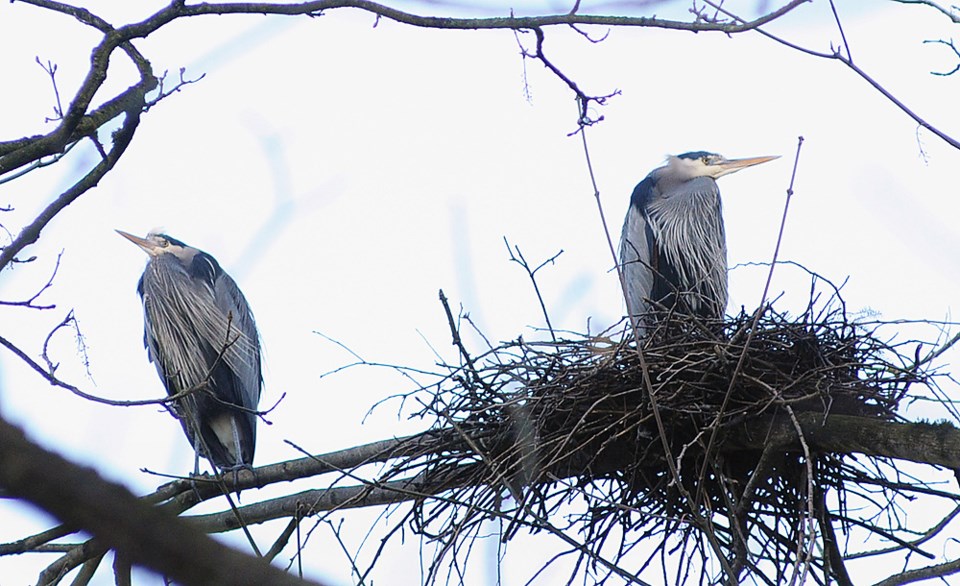They’re back. For the 18th consecutive year the Pacific Great Blue herons have returned to Stanley Park.
And the Vancouver Park Board’s Heron Cam is now live-stream the birds’ every move giving the public a chance to get up close and personal with one of North America’s largest urban heron colonies until the end of the summer breeding season.
The first nesting pair of herons was spotted in Tree B, how many can you see now? In the coming weeks more females will begin to arrive and pair up. Watch them now https://t.co/V789zlDB5a #HeronTalk pic.twitter.com/XJ0j5HgS11
— Vancouver Park Board (@ParkBoard) March 17, 2018
This is the fourth year for the Heron Cam, and this year the high-definition camera has been equipped with new features that enable better and longer views of the most productive nests. In the four years since the Heron Cam was launched, more than 100,000 viewers have watched the birds engage in nest building, courtship, egg-laying and brooding chicks while parents fend off eagle attacks and hungry fledglings compete for food in the nests.
Viewers can log in and control the camera for two minutes at a time, and when night falls the site will feature a time lapse of the day’s activities.
“We’re proud to support the Heron Cam for the fourth year,” said park board chair Stuart Mackinnon. “This live streaming camera supports our board’s diversity agenda, enables our partners to better monitor and protect the colony and helps to build public understanding and support for this species at risk.”
Also new this year will be moderated Facebook Live events where the Stanley Park Ecology Society will answer questions during dramatic moments in the life of the colony, such as the birth of the first chicks. In another first, the society will have an interpretive booth set up in the vicinity of the colony where a biologist will be on hand to answer questions from the public about the behaviour and life-cycle of the herons.
According to a park board statement, the Pacific Great Blue heron is unique because it does not migrate. Its natural year-round habitat is the Fraser River delta, which is under pressure from urban development, resulting in the loss of feeding and breeding grounds. One-third of great blue herons worldwide live around the Salish Sea and the Stanley Park colony is a vital part of the south coast heron population.
The park board has put a plan in place to ensure that renovations by Stanley Park Brewing and other activities do not disturb the herons through the nesting season. The measures include no outside work at the site for the duration of the nesting season. Daily monitoring will be carried out by biologists with the park board and Stanley Park Ecology Society, as well as an environmental monitor engaged by Stanley Park Brewing.
Residents are also encouraged to minimize activity in the vicinity of the colony that could cause distress to the birds, such as noise, bright lights, kites or helium balloons.
The society monitors the colony through the Heron Cam, as well as in rooftop and ground surveys. The society reports that there were 84 active nests in 2017 and an estimated 72 fledglings were raised. The report also notes that the 2017 nesting season was marked by a noticeable increase in eagle predation, which led to a lower nesting success rate and fewer fledglings than in previous years.
The Heron Cam can be viewed at vancouver.ca/parks-recreation-culture/heron-cam.aspx.
@JessicaEKerr
jkerr@vancourier.com



